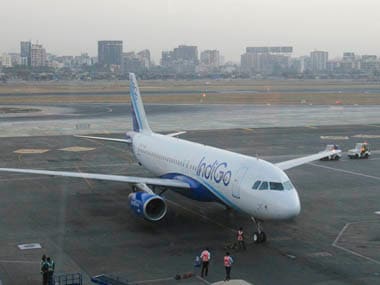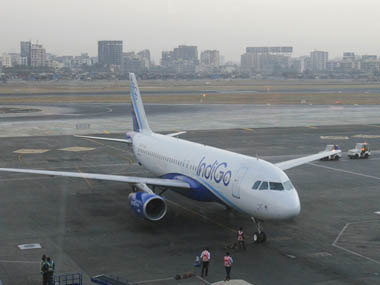As a frequent flyer on IndiGo and a fan of the airline, I couldn’t help but express my concern about the controversy unfolding around the grounded IndiGo jets and their faulty A320 Neo engines. The airline had to ground 14 jets that operate on these engines, and cancel over 480 flights between 16 March and 31 March. Over the past eighteen months, IndiGo aircrafts have experienced 69 engine failures mid-flight: An average of one per week. [caption id=“attachment_4404141” align=“alignleft” width=“380”]  Representational image. Reuters.[/caption] Even though the A320neo engines manufactured by Pratt and Whitney are used in jets globally, India was particularly impacted by the faulty engines because we use about 40 percent of the total engines flying worldwide. When the issue was flagged, the Directorate General of Civil Aviation (DGCA) and the airline immediately sprang into action, grounding jets and cancelling flights at the cost of revenue, productivity, and a possible loss of IndiGo’s flying slots. I believe this incident warrants a holistic examination of aviation safety in the country, particularly in terms of aircraft security and passenger behaviour. Railways and safety in trains has always been a political issue: Until recently, we had a budget dedicated to the Indian Railways, and in Parliament, MPs are very well versed with railway safety issues and articulately express their concerns. However, aviation safety receives very little parliamentary oversight, particularly compared to the railways, despite the fact that many MPs travel to Delhi by air to attend Parliament. Between 2014 and May 2017, 52 incidents of mid-air mishaps were reported, of which 35 cases were “near-miss” collisions: A majority of which were caused by errors in judgement on part of Air Traffic Control (ATC). Among the 151 pilots suspended between 2016 and 2017, a majority were suspended for failing their breathalyser tests either before or after their flights. There have also been reports where pilots have gotten into fights, abandoning their cockpits mid-air. These incidents invoke serious concerns and questions about aviation safety in India.
Why is there a culture of indiscipline and protocol violation among pilots, and what kinds of checks and balances exist for vetting them? What kind of procedural training do the air traffic controllers receive?
The massive push towards aviation expansion in the country and the ever-increasing frequency of flights means that the ATC needs to be much better trained. Have we been able to procure the right kind of talent and enough manpower to handle our burgeoning needs, and provide them with adequate training? Furthermore, are there synchronised processes that exist between airports, the ATC, the DGCA and the coastguard? For instance, in the infamous US Airways Flight 1594 incident in 2009, the pilot had to make an emergency ditching in the Hudson River after the plane encountered multiple bird strikes and lost all engine power. The well-oiled coordination between the various agencies involved meant that rescue ferries reached the site within minutes and evacuated all 155 people on board to safety. The other side of the story are the very real hazards that passengers themselves pose to aviation safety. I’ve witnessed several incidents where passengers display blatant disregard for the rules established for their own safety: Not fastening their seatbelts, for instance, and flustered crew having to tell people to take their seats while the plane is taxiing. How many people actually listen to or care about the safety demonstrations before the flight? Are people actually equipped to operate their oxygen masks or put on their life vests? Do they know that life vests cannot be inflated before they exit the aircraft in case of a water landing? Will people sitting next to the emergency exits actually be able to open the doors in a crisis, or will it be a riot of panic and chaos? The larger question here is this: Is India a safety-conscious country? Another way to think about this is the kind of relationships we have with our country, our environment and our fellow citizens. It is an indisputable fact that India has a culture of littering. I believe that littering (or not littering) is a good indicator of our civic sense and the respect we harbour for each other. It is fundamentally related to our connection with society, and the kind of ownership we feel about our country. I also believe that someone who litters blatantly and unconscientiously is much more likely to be cavalier and apathetic about safety regulations on an airplane. As a country, we sometimes tend to propagate and emphasise the wrong kind of values. We are emphatic about standing up for the National Anthem or going to the temple regularly, but we have no qualms evading taxes and dirtying our environment. It is a regular occurrence, and not a one-off incident, where people gather to watch as a woman is molested on the street, or someone is involved in an accident, and exploit them further by stealing their belongings or leaving them for dead, rather than helping out or at the very least alerting the authorities. This might seem unrelated to safety on an aircraft, but in fact it has a very fundamental connection to it: These incidents are a reflection of the kind of values that we as a society emphasise, and the mutual commitment and respect that we have for one another.
If we can’t be bothered to help a victim of a road accident on the street, how can we be expected to assist each other in a mid-air crisis when our own lives are at stake?
Till such time we are able inculcate these values, I believe we must have different, Indianised versions of safety protocols that don’t blindly ape the West. These protocols must be designed to suit our culture at every level: At the regulatory level, including ATC protocol and training, at the pilot and crew level, and most certainly at the level of the consumer. Given our less than satisfactory record of aviation safety, we must work to foster a culture of safety and consumer responsibility in India, which not only translates to responsible behaviour on aircrafts, but also percolates to our relationships with our environment and fellow citizens.


)

)
)
)
)
)
)
)
)



